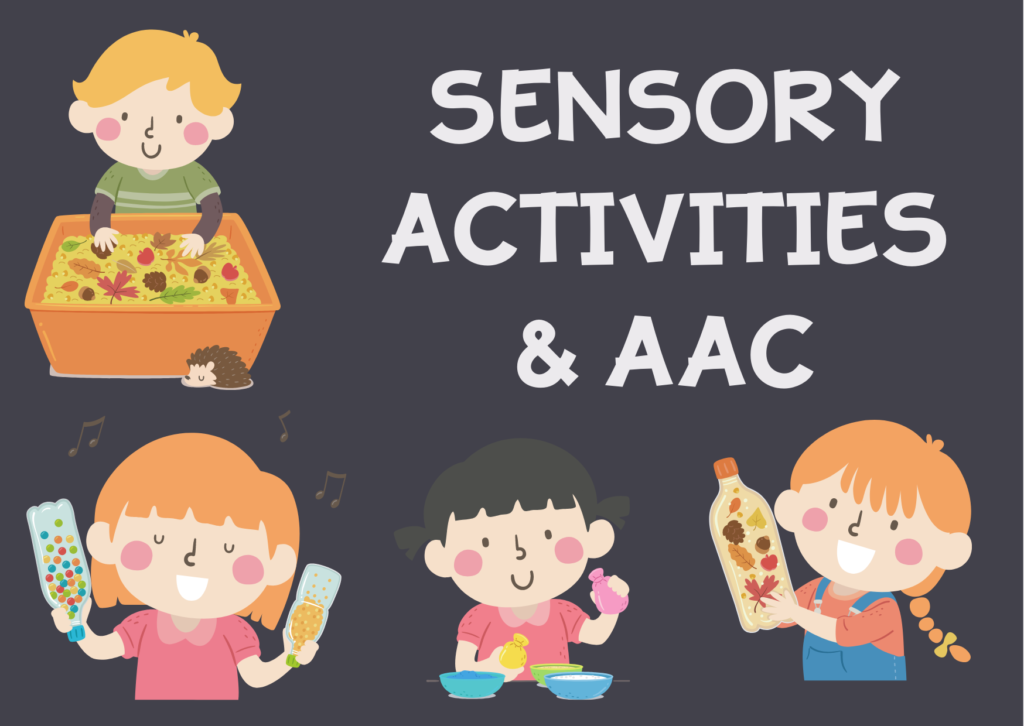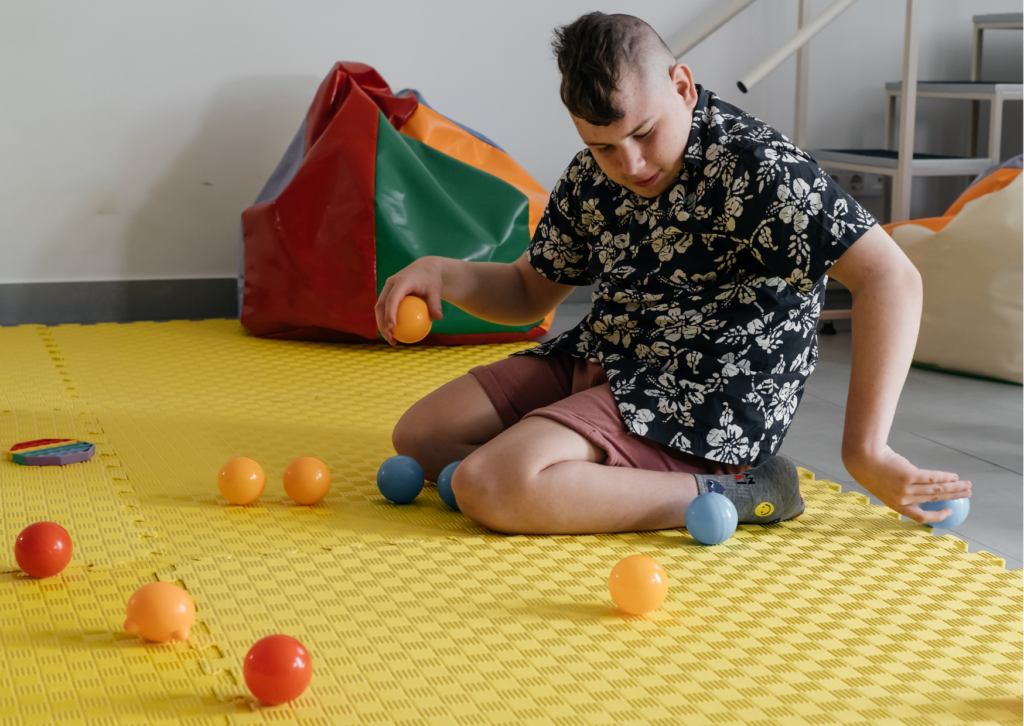Sensory play and interaction is proven to improve learning outcomes. This holds true even when it comes to communicating and learning with AAC. Why are sensory activities important and how can it be included in everyday opportunities for AAC? Avaz’s resident SLP, Niveditha, tells you all about it in this blog!


Therapists and families are constantly looking out for everyday opportunities to make AAC learning fun and functional. Recognizing and using these opportunities is one aspect. The other is using these opportunities with sensory activities that the child loves and is absolutely crazy about!
Language and communication do not develop in a bubble. If we are sitting at a table trying to teach the child language and how to use his device – we have to rethink our methods. This is NOT how the child interacts and learns at home.
As therapists, we often ask parents, “What does the child like?” Most often, the parent or caregiver would say something like – but he loves only the swing or his bouncing ball. This tells us the amazing power of movement and sensory input.
Children typically learn about the world around them through their sensory interactions with various things around them. Due to sensory and motor limitations, such opportunities are very few for children with special needs. Hence, it becomes very important to actively provide sensory experiences to them.
Importance of Sensory Activities
Sensory activities are important for children learning to use AAC. It is especially the case for children who are on the spectrum. Some of the reasons for this are –
- It helps the child to self regulate.
- Regulation, in turn, helps to increase their attention and participation in the activity at hand.
- As these are intrinsic motivators, they help to improve a child’s interest and engagement.
- Sensory activities assist in AAC implementation and increase carryover.
- They help to integrate core vocab with engaging movement activities
Pairing sensory activities and communication works well for children with visual impairment and motor difficulties too. This is because –
- It mirrors how children typically learn.
- Pairing both makes the minimal time available for rehabilitation more effective.
- Sensory activities provide a rich set of experiences to communicate about.
- Children with visual and motor difficulties struggle to generalize skills learnt out of context. Sensory activities remedy that.
Sensory with Communication – Why?
By infusing the sensory with communication, here’s what happens –
- It provides a rich sensory experience while communicating.
- This presents multiple opportunities to talk about while doing the activity.
- Creates an avenue for writing or talking about the activity after it is finished.
- Makes it easier for others to implement.


Where to begin?
Now that we have established its importance, let us see how to use sensory activities to make learning AAC fun!
Sensory Boxes
It is a self contained box with all the elements for a sensory activity. This box can also be theme based. We can include the sensory items, books related to the activity, AAC tools relating to the activity and writing tools where possible.
For instance, here is how you can build a Sensory Box for noise makers-
- Add different types of noise makers you can find around the house. Include things like whistles, rattles, squeaky toys, bells, spoon and plate etc.
- Include a book with images / photos of these items with their names written.
- You can also include the different actions done with each of them. Eg. plate and spoon go “BANG”.
- Add some low tech AAC which has this vocabulary, along with necessary core and fringe words. This could include words like – WANT, STOP, MORE, TAP, LOUD, SOFT, FAST, SLOW, MY TURN, YOUR TURN, LIKE, DON’T LIKE.
Every time you use this sensory box for engaging with your child all materials are in one place and you are ready to go
You can engage in the activity your child enjoys, while modelling relevant vocabulary and expecting the child to do the same.You could talk about it after it is done and read the book together or do so at bedtime too. Include vocabulary that might describe the experience, how they felt about the activity, what they do, who did it etc.you could target new vocabulary as well as review those they already know.
Other examples
You could do the same if swing is their favourite activity or they like playing with large Physio balls , or squishy slime or playdough- the opportunities are endless. But remember, look out for and focus on their favourites!
Using Sensory Materials Effectively
Here are some tips to use sensory materials and activities more effectively!
- Plan the activities in advance and keep the materials ready. This will help to get more mileage out of the the time spent.
- Allow the child to experiment with the materials being used. This will keep them excited to learn!
- Try using the same materials repeatedly. Multiple opportunities will help the child better understand what’s happening and then respond.
- This also mirrors typical learning.
- Repeated chances will also enable them to learn critical skills.
- Sensory materials are great for kids with a slower response time. So you can customize and plan activities accordingly.
Conclusion
Infusing meaningful communication and literacy into hands-on experiences is the best way for us to support growth for students with Complex communication needs. Providing a continuum of sensory experiences while doing so will hasten communication success and give richer results.
These activities are not just fun and motivating. They help with general arousal and modulation. This in turn results in optimal engagement and attention.




This is great. Thank you.